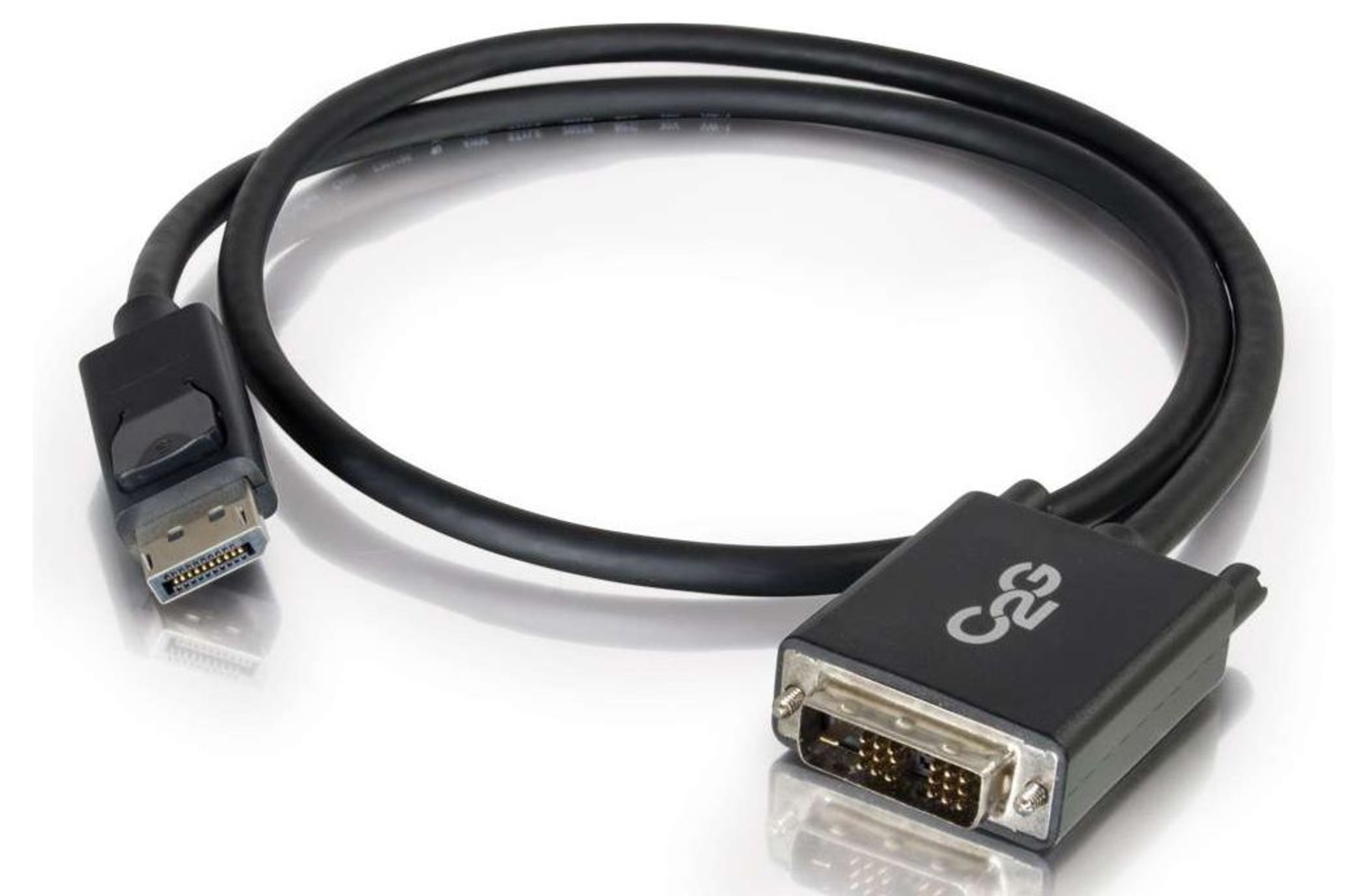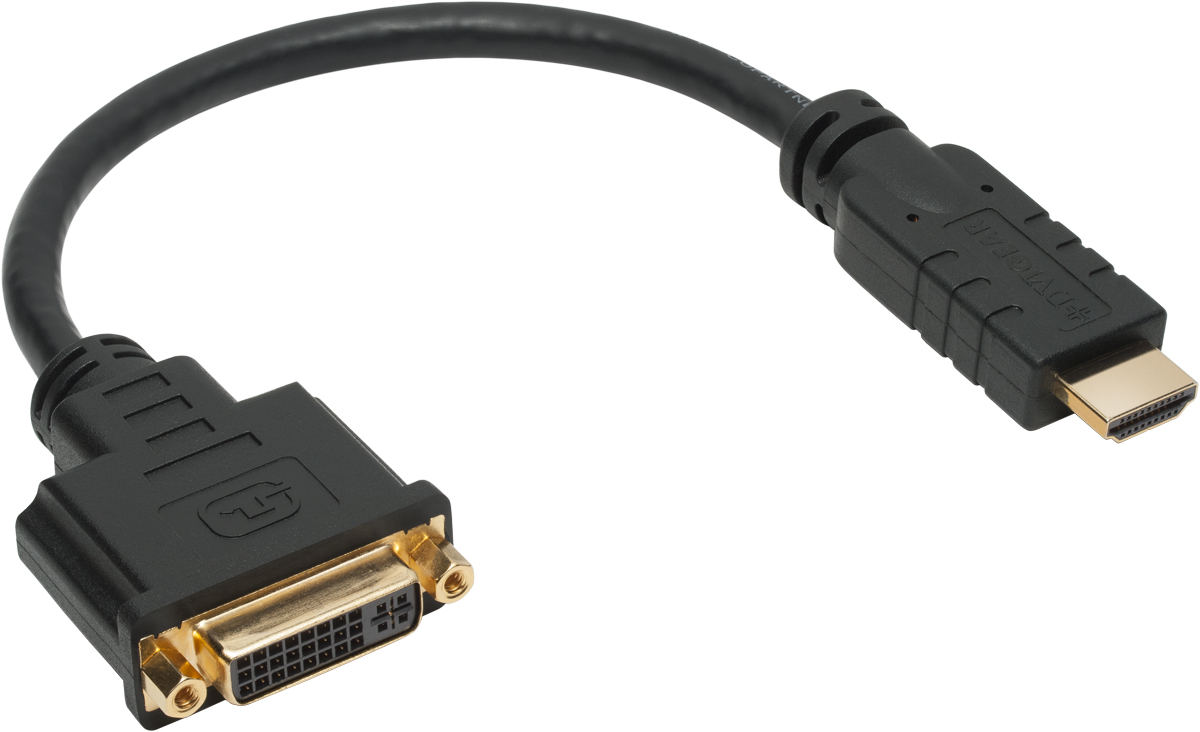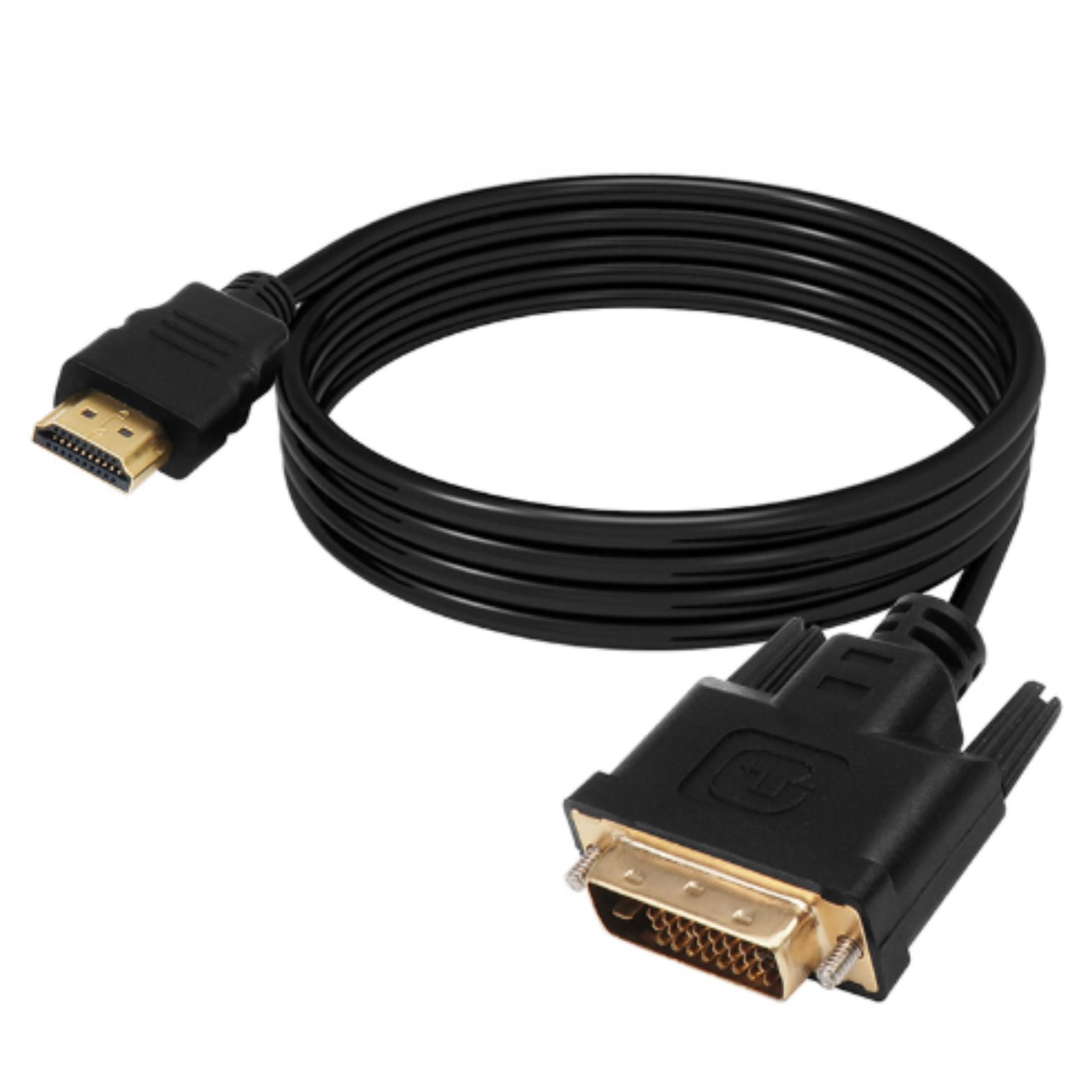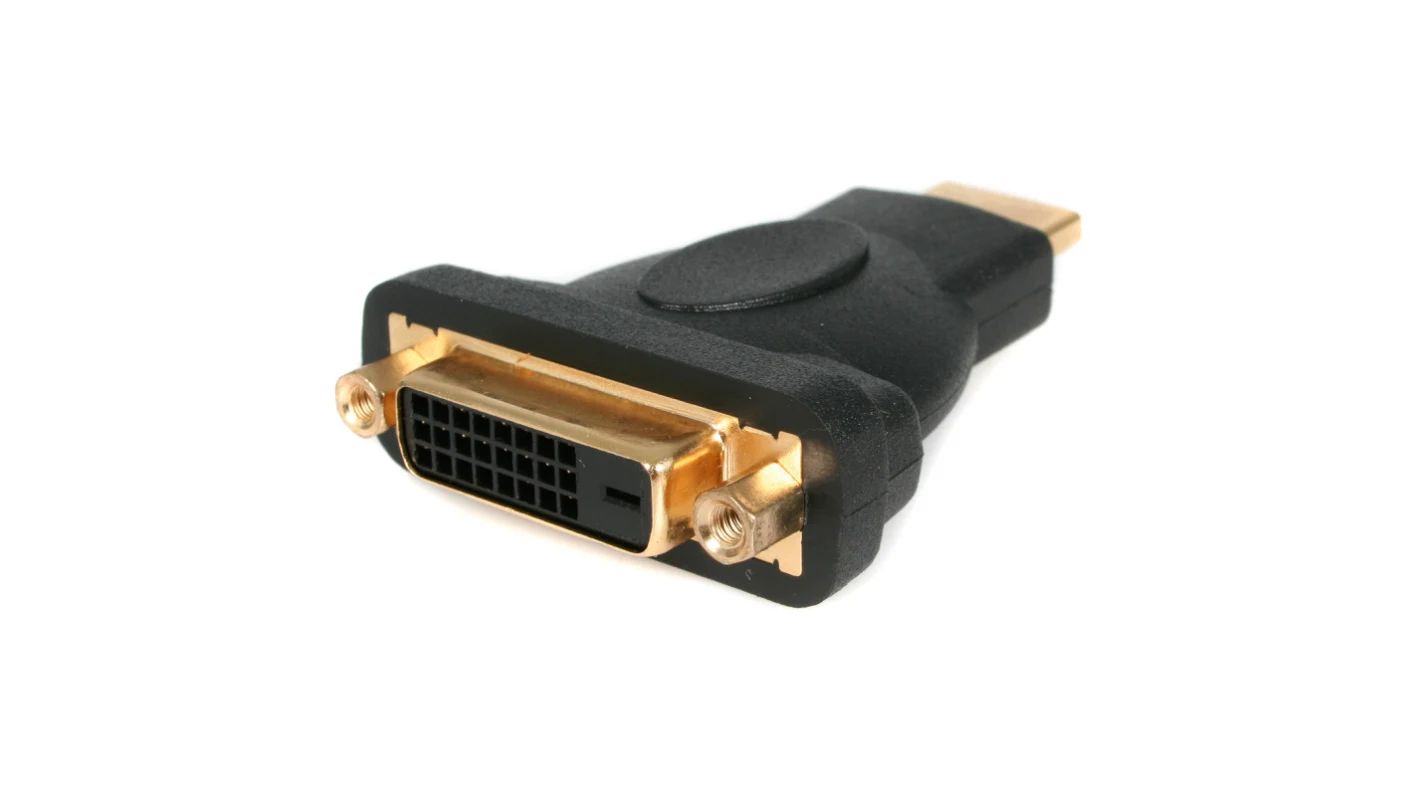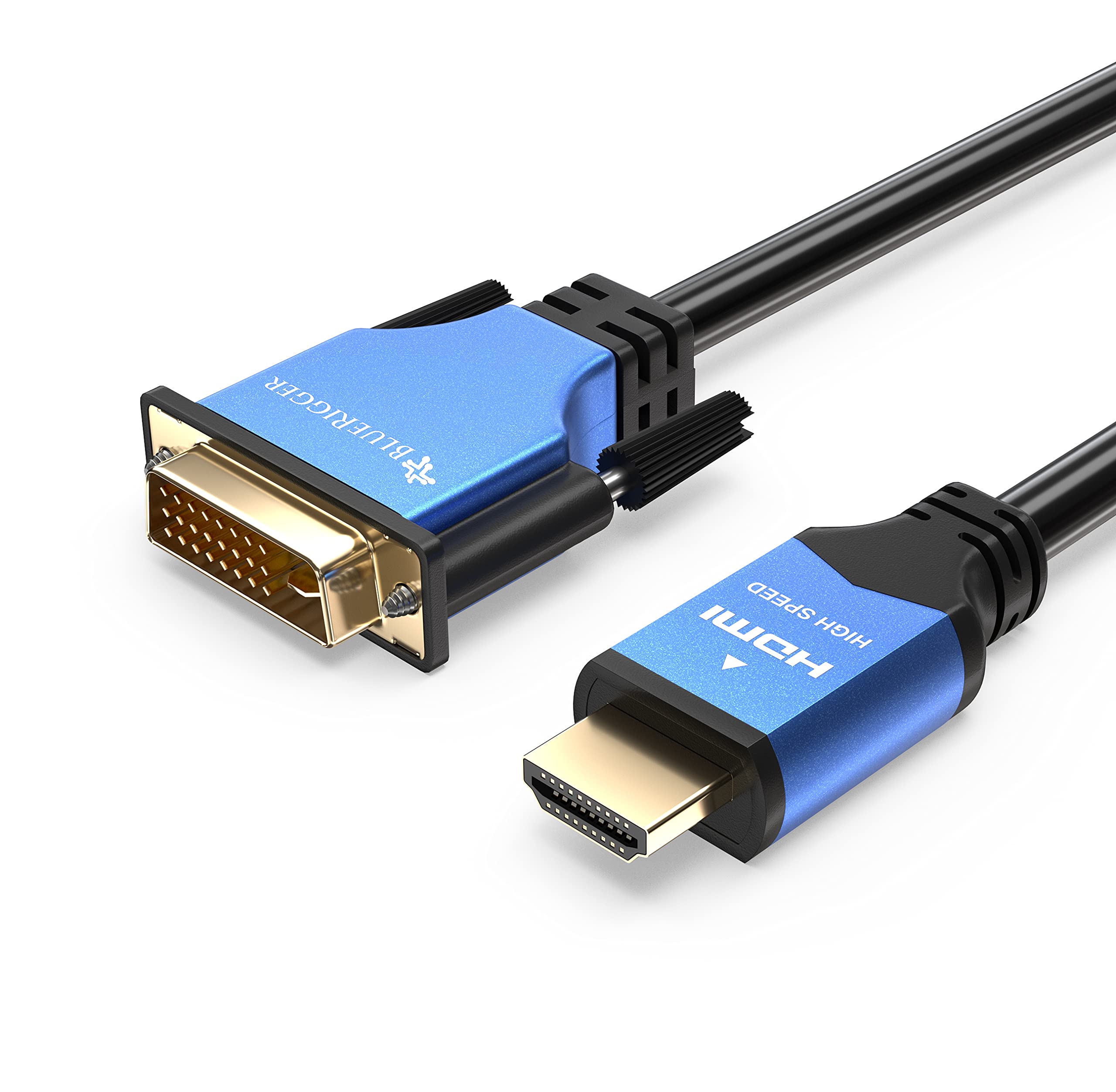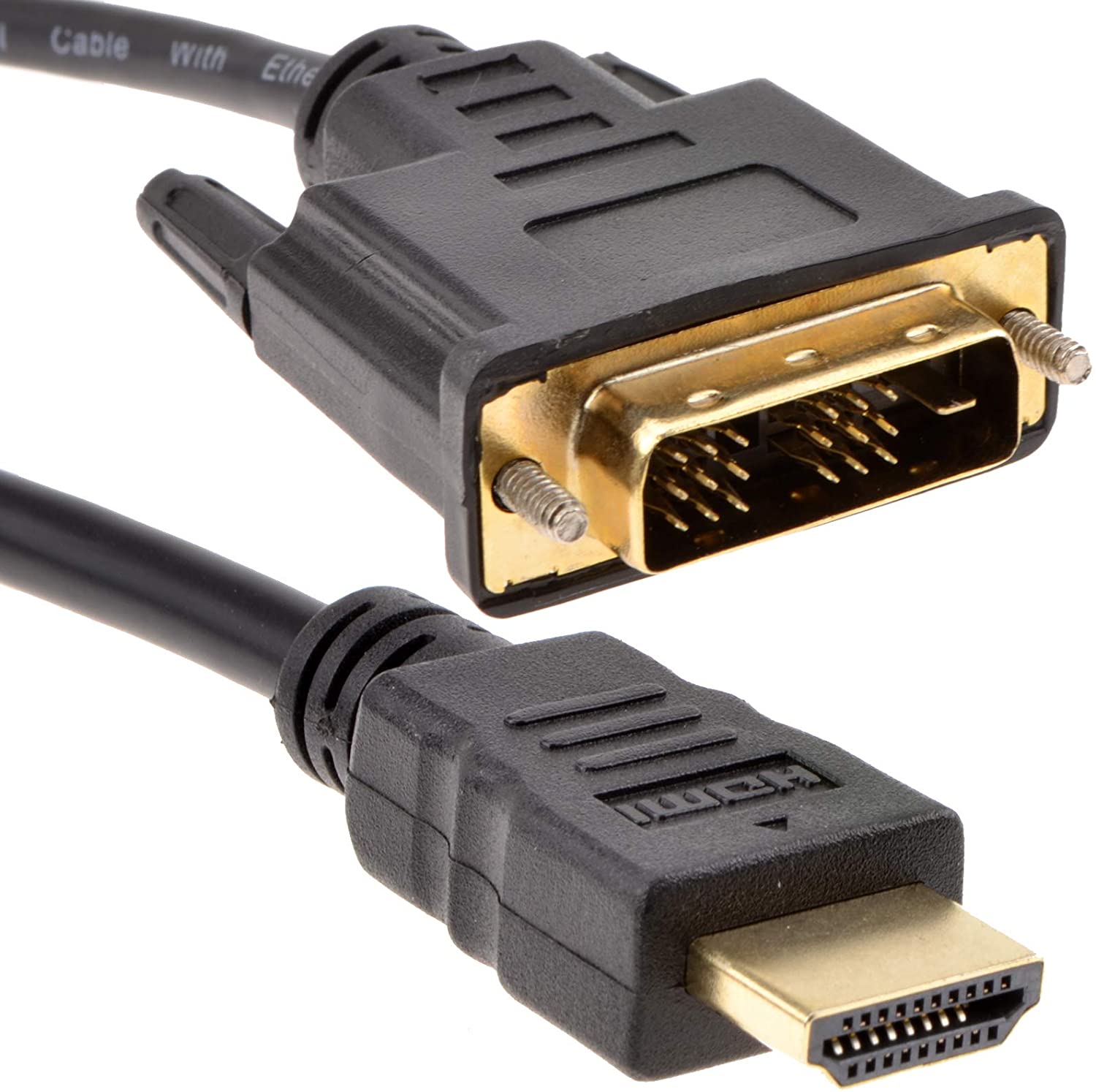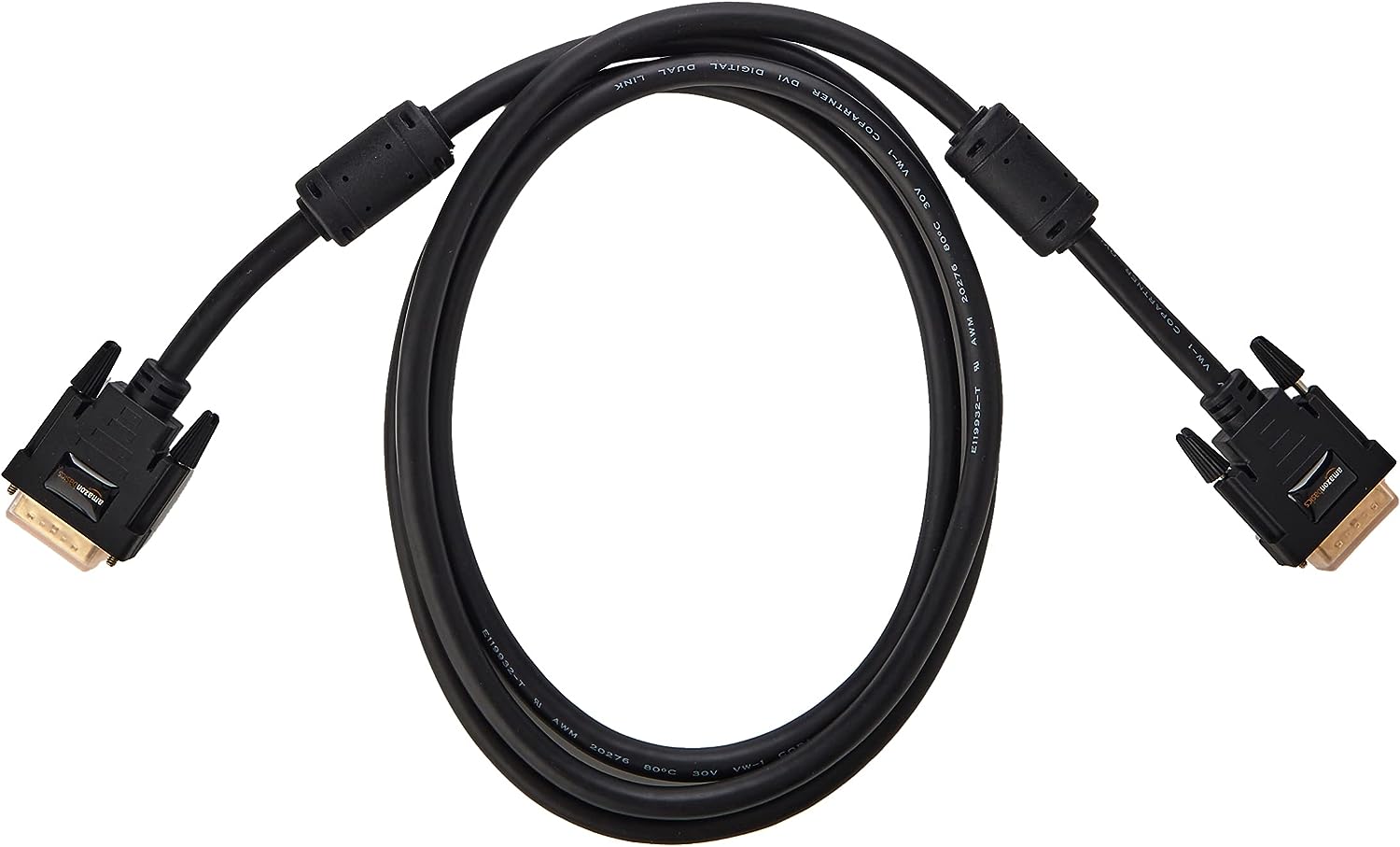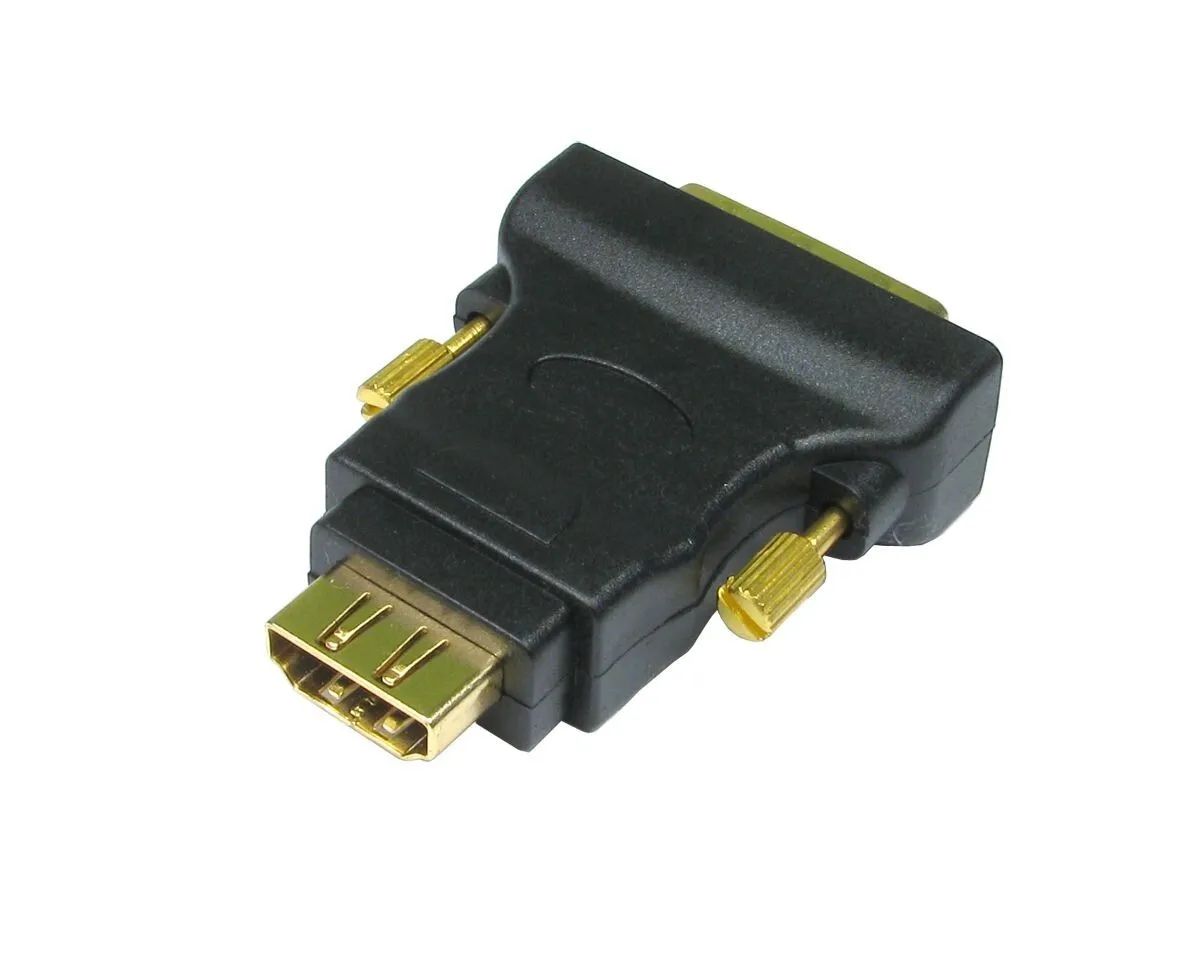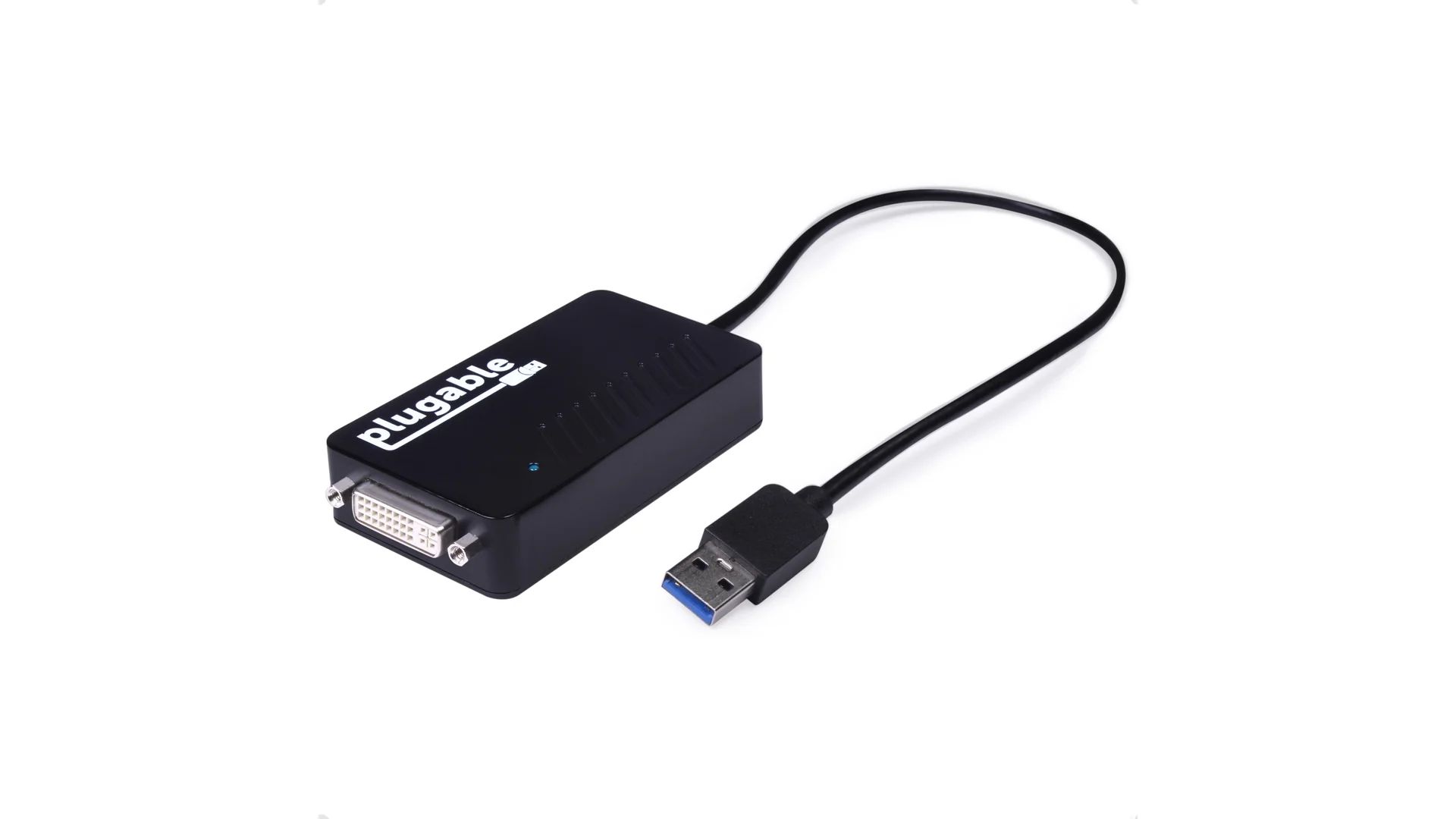Introduction
Welcome to the world of HDMI and DVI, two popular digital connection technologies that have revolutionized the way we connect our devices to displays. In today’s digital age, where high-definition visuals and crystal-clear audio are the norm, understanding HDMI and DVI becomes essential for tech enthusiasts, gamers, and anyone looking to connect their devices to a monitor, TV, or projector.
HDMI, which stands for High-Definition Multimedia Interface, and DVI, short for Digital Visual Interface, are both digital video and audio interfaces that transmit high-quality signals between devices. Whether you’re setting up a home theater system, connecting your gaming console, or hooking up a computer to a monitor, HDMI and DVI ensure a seamless and immersive experience.
While HDMI and DVI serve a similar purpose, they have their unique features and functionalities. In this guide, we’ll take a closer look at what HDMI and DVI mean and delve into the specifics of each technology. You’ll learn about the different connector types, cables, and adapters associated with HDMI and DVI. Additionally, we’ll compare the video and audio capabilities of HDMI and DVI and help you decide which connection option is best suited for your needs.
So, whether you’re a tech enthusiast looking to expand your knowledge on digital connections or a beginner wanting to understand the basics, this article will provide you with valuable insights into the world of HDMI and DVI.
What is HDMI?
HDMI, which stands for High-Definition Multimedia Interface, is a digital connection technology that transmits high-quality audio and video signals between devices. It has become the de facto standard for connecting a wide range of electronic devices, including TVs, monitors, projectors, gaming consoles, and media players.
One of the key advantages of HDMI is its ability to deliver uncompressed, high-definition audio and video signals. This means that you can enjoy stunning visuals and immersive sound without any loss in quality. HDMI supports various resolutions, from standard-definition (SD) to high-definition (HD) to ultra-high-definition (UHD) and even 8K resolutions.
HDMI also supports advanced features such as 3D display, deep color, and multi-channel audio. This allows you to experience the full potential of your devices, whether you’re watching your favorite movies, playing video games, or enjoying digital content.
In addition to its audio and video capabilities, HDMI also supports the transmission of control signals. This means that you can use a single remote control to manage multiple devices connected via HDMI. For example, you can control your TV, DVD player, and sound system all through one remote, making the user experience more convenient and streamlined.
HDMI has evolved over the years, with newer versions offering enhanced features and capabilities. The most common HDMI connector you’ll come across is the Type A connector, which is a 19-pin connector that supports Full HD and UHD resolutions. However, there are also smaller HDMI connectors like the Type C (Mini HDMI) and Type D (Micro HDMI), which are commonly found on smaller devices like smartphones and tablets.
Overall, HDMI is a versatile and widely adopted connection technology that ensures seamless and high-quality audio and video transmission between devices. Its compatibility with a wide range of devices and support for advanced features make it the go-to choice for connecting your devices to displays.
What is DVI?
DVI, which stands for Digital Visual Interface, is a digital connection standard that transmits high-quality video signals between devices. It was developed as an alternative to analog VGA (Video Graphics Array) connections and quickly gained popularity in the early 2000s.
Unlike HDMI, DVI is primarily focused on video transmission and does not support audio signals. It is commonly used for connecting devices such as computer monitors, projectors, and older display devices that do not have HDMI capabilities.
There are multiple types of DVI connectors, including DVI-D, DVI-I, and DVI-A. DVI-D connectors are designed for digital video-only transmission, while DVI-I connectors support both digital and analog signals. DVI-A connectors, on the other hand, are used specifically for transmitting analog signals.
DVI supports various video resolutions, including standard-definition (SD) and high-definition (HD). It can deliver crisp and clear visuals, making it ideal for tasks such as graphic design, video editing, and gaming.
Similar to HDMI, DVI also comes in different physical connector sizes. The most common DVI connector is the DVI-I, which has a rectangular shape with four pins around the flat plate. There are also smaller-sized connectors like the DVI-D Single Link and DVI-D Dual Link, which are used for compact devices and support different resolutions.
One of the advantages of DVI is its compatibility with older devices that lack HDMI ports. It allows you to connect older computers, graphics cards, and monitors that support DVI, ensuring that you can still make use of older equipment without sacrificing video quality.
However, it’s important to note that DVI does not support newer features such as 3D display or audio transmission. If you need these features, HDMI would be a more suitable option. Additionally, if you’re connecting a device with HDMI output to a monitor with DVI input, you may need an HDMI to DVI adapter to convert the signal.
In summary, DVI is a digital video connection standard that provides high-quality video transmission between devices. While it lacks audio capabilities and newer features like HDMI, it remains a popular choice for connecting older devices and displays that don’t support HDMI.
HDMI vs DVI: An Overview
When it comes to choosing between HDMI and DVI, it’s important to consider your specific needs and the devices you’re connecting. While both technologies offer digital video transmission, they have some key differences that set them apart.
One of the main differences between HDMI and DVI is that HDMI supports both video and audio signals, whereas DVI is primarily focused on video transmission. HDMI allows you to transmit high-quality audio and video through a single cable, eliminating the need for separate audio connections. This makes HDMI the preferred choice for connecting devices such as TVs and home theater systems, where audio and video synchronization is crucial.
On the other hand, if you’re connecting devices that only require video transmission, such as computer monitors or projectors, DVI can be a suitable option. DVI offers stable and high-quality video signals, making it a popular choice among graphic designers and gamers who prioritize visual accuracy.
Another significant difference between HDMI and DVI is their connector types. HDMI connectors come in various sizes, with the standard Type A being the most common. HDMI also offers smaller connector options like Type C (Mini HDMI) and Type D (Micro HDMI) for compact devices. DVI connectors, on the other hand, come in different types, including DVI-D (digital-only), DVI-I (digital and analog), and DVI-A (analog-only).
In terms of compatibility, HDMI is more commonly found on modern consumer electronics, including TVs, gaming consoles, and media players. It is backward compatible, meaning that you can use adapters or converters to connect HDMI devices to DVI displays. DVI, on the other hand, is commonly found on computer monitors and older display devices. You can use adapters or converters to connect DVI devices to HDMI displays, but audio signals will need to be handled separately.
When comparing video quality, both HDMI and DVI can support high-definition resolutions, but HDMI has evolved to support newer technologies like 3D display and 4K/8K resolutions. DVI, on the other hand, is more limited in terms of advanced features and is better suited for standard or high-definition video.
Ultimately, the choice between HDMI and DVI depends on the specific requirements of your devices and the level of audio and video functionality you need. If you need both audio and video capabilities, HDMI is the way to go. However, if you only require video transmission, DVI can offer a reliable and cost-effective solution.
HDMI Connectors and Cables
HDMI connectors and cables play a crucial role in ensuring seamless and high-quality audio and video transmission between devices. Understanding the different types of HDMI connectors and cables is essential for properly setting up your multimedia devices.
The most common type of HDMI connector is the Type A connector, which has 19 pins. It is the standard full-size HDMI connector and is widely found on TVs, projectors, and home theater systems. The Type A connector supports various HDMI features, including high-definition audio and video transmission.
In addition to the standard Type A connector, there are also smaller HDMI connectors available. The Type C connector, also known as Mini HDMI, is commonly found on portable devices such as digital cameras and camcorders. The Type D connector, also known as Micro HDMI, is even smaller and is typically found on smartphones and tablets.
When it comes to HDMI cables, there are several factors to consider. The HDMI specification used by the cable determines the supported features and video resolutions. For example, HDMI 1.4 supports 3D display and 4K resolutions, while HDMI 2.0 supports higher resolutions, such as 8K. It’s important to ensure that the HDMI cable you choose matches the capabilities of your devices.
Another consideration is the length of the HDMI cable. HDMI cables are available in various lengths, ranging from a few feet to over 50 feet. Longer cables may result in signal degradation, especially for higher resolutions. It’s generally recommended to choose a cable length that suits your setup without compromising signal quality.
HDMI cables also come in different categories, such as Standard HDMI, High-Speed HDMI, and Premium High-Speed HDMI. Standard HDMI cables are suitable for 720p and 1080i resolutions, while High-Speed HDMI cables support 1080p and higher resolutions. Premium High-Speed HDMI cables are designed to support advanced features like 4K/8K resolutions, HDR (High Dynamic Range), and more.
When purchasing HDMI cables, it’s advisable to choose cables from reputable manufacturers to ensure reliability and compatibility. While there are more affordable options available, investing in quality HDMI cables can provide better performance and durability in the long run.
Overall, understanding the different types of HDMI connectors and cables is vital for achieving optimal audio and video performance. Paying attention to the connector type, cable specifications, length, and quality can help ensure a seamless and immersive multimedia experience.
DVI Connectors and Cables
DVI connectors and cables are widely used for connecting devices such as computer monitors, projectors, and older display devices. Understanding the different types of DVI connectors and cables is essential for ensuring a proper and reliable digital video connection.
DVI connectors come in various types, including DVI-D (digital-only), DVI-I (digital and analog), and DVI-A (analog-only). These connectors have different pin configurations and capabilities.
The DVI-D connector is the most common type and is used for digital video transmission. It carries a purely digital signal, making it ideal for connecting digital displays such as computer monitors. The DVI-I connector, on the other hand, supports both digital and analog signals, making it more versatile for older devices that require analog connections.
DVI-A connectors are specifically designed for analog video signals. Although they are not as commonly used, they can be useful for connecting legacy devices that only support analog video output.
When it comes to DVI cables, there are various factors to consider. DVI cables come in single-link and dual-link versions. Single-link cables support lower resolutions, up to 1920×1200, while dual-link cables can handle higher resolutions, including QHD (2560×1600) and 4K (3840×2160).
It’s important to note that while DVI cables can support high-quality video, they do not carry audio signals. If audio transmission is required, a separate audio cable or alternative solution will be necessary.
DVI cables are typically available in different lengths to accommodate various setups. However, it’s crucial to consider signal degradation when using longer cables, especially with dual-link DVI connections. Longer cables may result in weaker signals and reduced video quality. Therefore, it’s recommended to choose the appropriate length that matches your specific setup without sacrificing video performance.
Just like with HDMI cables, investing in reliable and well-manufactured DVI cables is important to ensure signal integrity and compatibility. Opting for high-quality cables from reputable manufacturers can minimize the risk of signal loss and provide a stable and clear video connection.
When connecting a device with HDMI output to a monitor with DVI input, you will need an HDMI to DVI adapter or cable. These adapters convert the HDMI signal to DVI format, allowing you to connect your HDMI source to DVI displays. Keep in mind that audio signals will need to be handled separately when using HDMI to DVI adapters.
In summary, understanding the various types of DVI connectors and cables is essential when connecting devices that require digital video transmission. Consider factors such as the connector type, cable length, and signal specifications to ensure a reliable and high-quality video connection.
HDMI to DVI and DVI to HDMI Adapters
When you need to connect devices with HDMI and DVI ports, adapters play a crucial role in ensuring compatibility and seamless signal transmission. HDMI to DVI and DVI to HDMI adapters allow you to bridge the gap between these two technologies, enabling you to connect HDMI devices to DVI displays or vice versa.
HDMI to DVI adapters are used when you want to connect a device with an HDMI output, such as a DVD player or gaming console, to a display or monitor that only has a DVI input. These adapters typically feature an HDMI female connector on one end and a DVI male connector on the other end. By using an HDMI to DVI adapter, you can convert the HDMI signal to DVI format and enjoy high-quality video on your DVI display.
It’s important to note that HDMI to DVI adapters only transmit video signals and do not carry audio. If you need audio transmission as well, you will need to use a separate audio cable or explore alternative solutions.
DVI to HDMI adapters, on the other hand, are used when you want to connect a device with a DVI output, such as a computer or older graphics card, to a display or TV that has an HDMI input. These adapters typically feature a DVI female connector on one end and an HDMI male connector on the other end. They allow you to convert the DVI signal to HDMI format and enjoy HD video and audio on your HDMI display.
When using a DVI to HDMI adapter, it’s crucial to ensure that the DVI output supports digital signals, as some older devices may only have analog DVI outputs. If you’re unsure, check the specifications of your DVI source device or consult the manufacturer’s documentation.
Adapters can vary in terms of build quality and compatibility, so it’s important to choose reputable brands and manufacturers. This helps ensure reliable signal transmission and minimize the risk of data loss or compatibility issues. Additionally, opting for adapters that support the specific resolutions and features you require will ensure optimal performance.
It’s worth mentioning that while adapters are a convenient solution for connecting HDMI and DVI devices, it’s always recommended to use the native connections whenever possible. Direct HDMI-to-HDMI or DVI-to-DVI connections eliminate the need for adapters and maximize compatibility and signal integrity.
Overall, HDMI to DVI and DVI to HDMI adapters provide a versatile and practical solution for connecting HDMI and DVI devices. They enable you to bridge the gap between these technologies, ensuring compatibility and allowing you to enjoy high-quality audio and video signals on your displays and devices.
Comparing Video and Audio Capabilities
When comparing HDMI and DVI, it is important to consider their video and audio capabilities. Understanding the differences in these aspects can help you make an informed decision about which connection option best suits your needs.
Video Capabilities:
HDMI: HDMI is known for its versatility when it comes to video capabilities. It supports a wide range of resolutions, ranging from standard definition (SD) to high definition (HD) to ultra-high definition (UHD) and even 8K resolutions. HDMI also supports advanced features like deep color, 3D display, and HDR (High Dynamic Range), allowing for stunning visuals and lifelike imagery. Additionally, newer versions of HDMI, such as HDMI 2.0 and HDMI 2.1, have expanded video capabilities, supporting higher frame rates and enhanced color spaces.
DVI: DVI, on the other hand, has more limited video capabilities compared to HDMI. It can support resolutions up to 2560×1600 (QHD) with dual-link DVI, but it is not capable of handling higher resolutions like 4K or 8K. DVI primarily excels in delivering stable and high-quality video signals, making it a popular choice for computer monitors and graphic-intensive applications like gaming and graphic design.
Audio Capabilities:
HDMI: One of the key advantages of HDMI over DVI is its support for audio transmission. HDMI can carry both video and audio signals through a single cable. This makes it convenient for connecting devices like TVs, home theater systems, and soundbars, where audio and video synchronization is essential. HDMI supports various audio formats, including Dolby TrueHD, DTS-HD Master Audio, and multichannel audio, providing immersive sound experiences.
DVI: DVI does not support audio transmission. It is a video-only connection technology, which means that if you’re using DVI, you will need a separate audio connection, such as a dedicated audio cable or alternative audio output. This can be a limitation for certain setups where a single cable solution is desired.
When choosing between HDMI and DVI, it is important to consider your specific needs. If you require both video and audio capabilities, HDMI is the obvious choice, especially for setups involving home theaters or multimedia content consumption. However, if you only need high-quality video transmission and are connecting devices like computer monitors or projectors, DVI can offer a reliable and cost-effective solution.
It’s worth noting that with HDMI to DVI or DVI to HDMI adapters, you can still achieve video transmission between HDMI and DVI devices. However, audio signals would need to be handled separately in such scenarios.
In summary, HDMI provides a comprehensive solution for both video and audio transmission with support for advanced features and higher resolutions. DVI, on the other hand, focuses solely on video transmission and is well-suited for applications where a stable and high-quality video signal is the primary consideration.
Choosing Between HDMI and DVI
When it comes to choosing between HDMI and DVI, there are several factors to consider based on your specific needs and the devices you’re connecting. Both HDMI and DVI have their unique features and advantages, and understanding these differences can help you make an informed decision.
Here are some key considerations to keep in mind when choosing between HDMI and DVI:
Audio Capability: If audio transmission is crucial for your setup, HDMI is the clear choice. HDMI supports both video and audio signals in a single cable, eliminating the need for separate audio connections. This makes it ideal for home theater systems, TVs, and setups where audio and video synchronization is essential. DVI, on the other hand, does not support audio transmission, requiring a separate audio connection for audio playback.
Video Quality and Features: HDMI generally offers more advanced video capabilities compared to DVI. HDMI supports a wide range of resolutions, including high definition (HD), ultra-high definition (UHD), and even 8K resolutions. It also supports advanced features like 3D display, deep color, and HDR (High Dynamic Range), delivering stunning visuals and rich color reproduction. DVI, while it supports high-quality video transmission, has more limited capabilities and is primarily suited for standard or high definition resolutions.
Device Compatibility: Consider the devices you’re connecting and their available ports. HDMI is more commonly found on modern consumer electronics, including TVs, gaming consoles, and media players, making it highly compatible with a wide range of devices. DVI, on the other hand, is often found on computer monitors and older display devices. If you’re connecting devices with HDMI ports to displays with DVI inputs, adapters or converters may be needed to bridge the connection. The reverse is also true for connecting DVI devices to HDMI displays.
Cost Consideration: In terms of cost, DVI is generally more affordable than HDMI. If you’re on a budget and don’t require audio capabilities or advanced features, DVI can provide a cost-effective solution for video transmission. On the other hand, if you need audio functionality and the latest video features, investing in HDMI-enabled devices and cables may be necessary, albeit at a higher cost.
Compatibility with Existing Equipment: Consider the devices and equipment you already own. If you have older devices with DVI outputs or monitors with DVI inputs, sticking with DVI may be more practical. Conversely, if you have newer devices with HDMI outputs, it makes sense to opt for HDMI for seamless compatibility.
Ultimately, the choice between HDMI and DVI depends on your specific requirements and the devices you’re connecting. If you need both audio and video transmission, and advanced features like 3D display and HDR, HDMI is the way to go. However, if you only need video transmission and have devices with DVI ports or older display devices, DVI can provide a reliable and cost-effective solution.
Keep in mind that there are adapters and converters available to bridge the connection between HDMI and DVI, allowing you to connect devices with different ports. However, it’s important to understand the limitations and considerations when using adapters, especially in terms of audio transmission.
Consider your specific needs, the compatibility of your devices, and the desired audio and video capabilities to make the best decision between HDMI and DVI.
Conclusion
In conclusion, both HDMI and DVI are digital connection technologies that have transformed the way we connect our devices to displays. While HDMI excels in its ability to transmit both high-quality audio and video signals in a single cable, DVI focuses primarily on video transmission. Choosing between HDMI and DVI depends on your specific needs and the devices you’re connecting.
If you require both audio and video capabilities, HDMI is the go-to choice. Its support for various resolutions, advanced features like 3D display and HDR, and compatibility with modern consumer electronics make it ideal for home theater systems, TVs, and setups that demand audio and video synchronization.
On the other hand, DVI is a reliable and cost-effective option for video-only transmission. It is commonly found on computer monitors and older displays, making it well-suited for applications that prioritize high-quality video output, such as graphic design or gaming.
It’s important to consider factors such as audio capability, video quality and features, device compatibility, cost, and compatibility with existing equipment when selecting between HDMI and DVI. Adapters and converters can bridge the gap between these technologies, allowing you to connect HDMI devices to DVI displays or vice versa, but it’s crucial to understand the limitations and considerations, particularly regarding audio transmission.
Remember to choose reliable cables and adapters from reputable manufacturers to ensure signal integrity and compatibility. Taking these steps will allow you to enjoy seamless and high-quality audio and video transmission between your devices and displays.
Whether you’re setting up a home theater system, connecting your gaming console, or working on graphic-intensive tasks, understanding HDMI and DVI will help you navigate the world of digital connections and make informed decisions for your specific requirements.
By considering your needs, compatibility, and desired audio and video capabilities, you can confidently choose between HDMI and DVI to create a seamless and immersive experience for your digital devices and displays.







